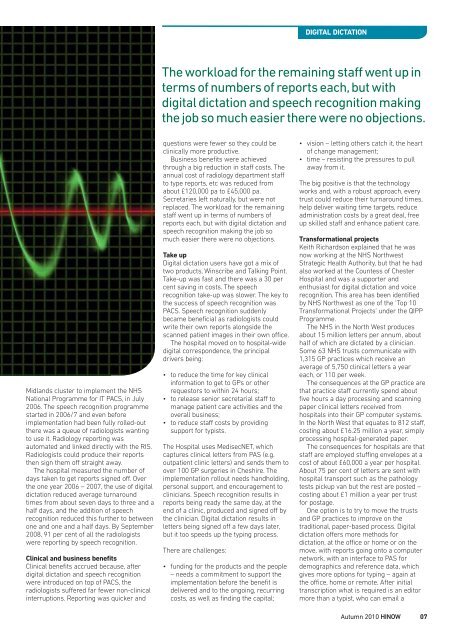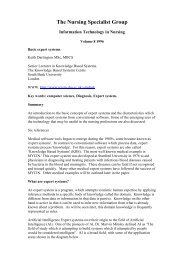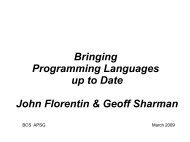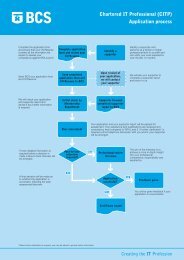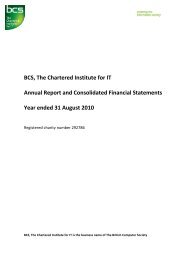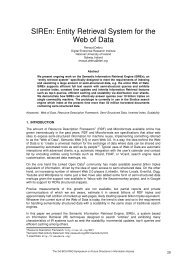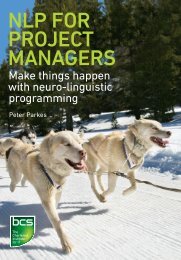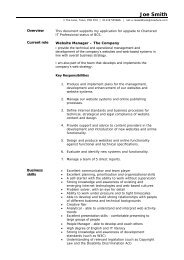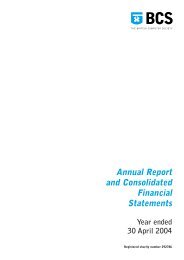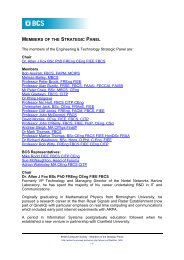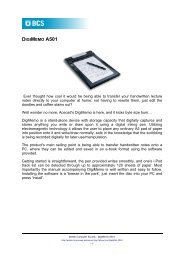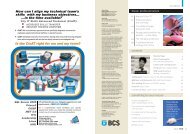DIGITAL DICTATION Reporting on the benefits of digital ... - BCS
DIGITAL DICTATION Reporting on the benefits of digital ... - BCS
DIGITAL DICTATION Reporting on the benefits of digital ... - BCS
Create successful ePaper yourself
Turn your PDF publications into a flip-book with our unique Google optimized e-Paper software.
Midlands cluster to implement <strong>the</strong> NHS<br />
Nati<strong>on</strong>al Programme for IT PACS, in July<br />
2006. The speech recogniti<strong>on</strong> programme<br />
started in 2006/7 and even before<br />
implementati<strong>on</strong> had been fully rolled-out<br />
<strong>the</strong>re was a queue <strong>of</strong> radiologists wanting<br />
to use it. Radiology reporting was<br />
automated and linked directly with <strong>the</strong> RIS.<br />
Radiologists could produce <strong>the</strong>ir reports<br />
<strong>the</strong>n sign <strong>the</strong>m <strong>of</strong>f straight away.<br />
The hospital measured <strong>the</strong> number <strong>of</strong><br />
days taken to get reports signed <strong>of</strong>f. Over<br />
<strong>the</strong> <strong>on</strong>e year 2006 – 2007, <strong>the</strong> use <strong>of</strong> <strong>digital</strong><br />
dictati<strong>on</strong> reduced average turnaround<br />
times from about seven days to three and a<br />
half days, and <strong>the</strong> additi<strong>on</strong> <strong>of</strong> speech<br />
recogniti<strong>on</strong> reduced this fur<strong>the</strong>r to between<br />
<strong>on</strong>e and <strong>on</strong>e and a half days. By September<br />
2008, 91 per cent <strong>of</strong> all <strong>the</strong> radiologists<br />
were reporting by speech recogniti<strong>on</strong>.<br />
Clinical and business <strong>benefits</strong><br />
Clinical <strong>benefits</strong> accrued because, after<br />
<strong>digital</strong> dictati<strong>on</strong> and speech recogniti<strong>on</strong><br />
were introduced <strong>on</strong> top <strong>of</strong> PACS, <strong>the</strong><br />
radiologists suffered far fewer n<strong>on</strong>-clinical<br />
interrupti<strong>on</strong>s. <str<strong>on</strong>g>Reporting</str<strong>on</strong>g> was quicker and<br />
<str<strong>on</strong>g>DIGITAL</str<strong>on</strong>g> <str<strong>on</strong>g>DICTATION</str<strong>on</strong>g><br />
The workload for <strong>the</strong> remaining staff went up in<br />
terms <strong>of</strong> numbers <strong>of</strong> reports each,but with<br />
<strong>digital</strong> dictati<strong>on</strong> and speech recogniti<strong>on</strong> making<br />
<strong>the</strong> job so much easier <strong>the</strong>re were no objecti<strong>on</strong>s.<br />
questi<strong>on</strong>s were fewer so <strong>the</strong>y could be<br />
clinically more productive.<br />
Business <strong>benefits</strong> were achieved<br />
through a big reducti<strong>on</strong> in staff costs. The<br />
annual cost <strong>of</strong> radiology department staff<br />
to type reports, etc was reduced from<br />
about £120,000 pa to £45,000 pa.<br />
Secretaries left naturally, but were not<br />
replaced. The workload for <strong>the</strong> remaining<br />
staff went up in terms <strong>of</strong> numbers <strong>of</strong><br />
reports each, but with <strong>digital</strong> dictati<strong>on</strong> and<br />
speech recogniti<strong>on</strong> making <strong>the</strong> job so<br />
much easier <strong>the</strong>re were no objecti<strong>on</strong>s.<br />
Take up<br />
Digital dictati<strong>on</strong> users have got a mix <strong>of</strong><br />
two products, Winscribe and Talking Point.<br />
Take-up was fast and <strong>the</strong>re was a 30 per<br />
cent saving in costs. The speech<br />
recogniti<strong>on</strong> take-up was slower. The key to<br />
<strong>the</strong> success <strong>of</strong> speech recogniti<strong>on</strong> was<br />
PACS. Speech recogniti<strong>on</strong> suddenly<br />
became beneficial as radiologists could<br />
write <strong>the</strong>ir own reports al<strong>on</strong>gside <strong>the</strong><br />
scanned patient images in <strong>the</strong>ir own <strong>of</strong>fice.<br />
The hospital moved <strong>on</strong> to hospital-wide<br />
<strong>digital</strong> corresp<strong>on</strong>dence, <strong>the</strong> principal<br />
drivers being:<br />
to reduce <strong>the</strong> time for key clinical<br />
informati<strong>on</strong> to get to GPs or o<strong>the</strong>r<br />
requestors to within 24 hours;<br />
to release senior secretarial staff to<br />
manage patient care activities and <strong>the</strong><br />
overall business;<br />
to reduce staff costs by providing<br />
support for typists.<br />
The Hospital uses MedisecNET, which<br />
captures clinical letters from PAS (e.g.<br />
outpatient clinic letters) and sends <strong>the</strong>m to<br />
over 100 GP surgeries in Cheshire. The<br />
implementati<strong>on</strong> rollout needs handholding,<br />
pers<strong>on</strong>al support, and encouragement to<br />
clinicians. Speech recogniti<strong>on</strong> results in<br />
reports being ready <strong>the</strong> same day, at <strong>the</strong><br />
end <strong>of</strong> a clinic, produced and signed <strong>of</strong>f by<br />
<strong>the</strong> clinician. Digital dictati<strong>on</strong> results in<br />
letters being signed <strong>of</strong>f a few days later,<br />
but it too speeds up <strong>the</strong> typing process.<br />
There are challenges:<br />
funding for <strong>the</strong> products and <strong>the</strong> people<br />
– needs a commitment to support <strong>the</strong><br />
implementati<strong>on</strong> before <strong>the</strong> benefit is<br />
delivered and to <strong>the</strong> <strong>on</strong>going, recurring<br />
costs, as well as finding <strong>the</strong> capital;<br />
visi<strong>on</strong> – letting o<strong>the</strong>rs catch it, <strong>the</strong> heart<br />
<strong>of</strong> change management;<br />
time – resisting <strong>the</strong> pressures to pull<br />
away from it.<br />
The big positive is that <strong>the</strong> technology<br />
works and, with a robust approach, every<br />
trust could reduce <strong>the</strong>ir turnaround times,<br />
help deliver waiting time targets, reduce<br />
administrati<strong>on</strong> costs by a great deal, free<br />
up skilled staff and enhance patient care.<br />
Transformati<strong>on</strong>al projects<br />
Keith Richards<strong>on</strong> explained that he was<br />
now working at <strong>the</strong> NHS Northwest<br />
Strategic Health Authority, but that he had<br />
also worked at <strong>the</strong> Countess <strong>of</strong> Chester<br />
Hospital and was a supporter and<br />
enthusiast for <strong>digital</strong> dictati<strong>on</strong> and voice<br />
recogniti<strong>on</strong>. This area has been identified<br />
by NHS Northwest as <strong>on</strong>e <strong>of</strong> <strong>the</strong> ‘Top 10<br />
Transformati<strong>on</strong>al Projects’ under <strong>the</strong> QIPP<br />
Programme.<br />
The NHS in <strong>the</strong> North West produces<br />
about 15 milli<strong>on</strong> letters per annum, about<br />
half <strong>of</strong> which are dictated by a clinician.<br />
Some 63 NHS trusts communicate with<br />
1,315 GP practices which receive an<br />
average <strong>of</strong> 5,750 clinical letters a year<br />
each, or 110 per week.<br />
The c<strong>on</strong>sequences at <strong>the</strong> GP practice are<br />
that practice staff currently spend about<br />
five hours a day processing and scanning<br />
paper clinical letters received from<br />
hospitals into <strong>the</strong>ir GP computer systems.<br />
In <strong>the</strong> North West that equates to 812 staff,<br />
costing about £16.25 milli<strong>on</strong> a year, simply<br />
processing hospital-generated paper.<br />
The c<strong>on</strong>sequences for hospitals are that<br />
staff are employed stuffing envelopes at a<br />
cost <strong>of</strong> about £60,000 a year per hospital.<br />
About 75 per cent <strong>of</strong> letters are sent with<br />
hospital transport such as <strong>the</strong> pathology<br />
tests pickup van but <strong>the</strong> rest are posted –<br />
costing about £1 milli<strong>on</strong> a year per trust<br />
for postage.<br />
One opti<strong>on</strong> is to try to move <strong>the</strong> trusts<br />
and GP practices to improve <strong>on</strong> <strong>the</strong><br />
traditi<strong>on</strong>al, paper-based process. Digital<br />
dictati<strong>on</strong> <strong>of</strong>fers more methods for<br />
dictati<strong>on</strong>, at <strong>the</strong> <strong>of</strong>fice or home or <strong>on</strong> <strong>the</strong><br />
move, with reports going <strong>on</strong>to a computer<br />
network, with an interface to PAS for<br />
demographics and reference data, which<br />
gives more opti<strong>on</strong>s for typing – again at<br />
<strong>the</strong> <strong>of</strong>fice, home or remote. After initial<br />
transcripti<strong>on</strong> what is required is an editor<br />
more than a typist, who can email a<br />
Autumn 2010 HINOW 07


